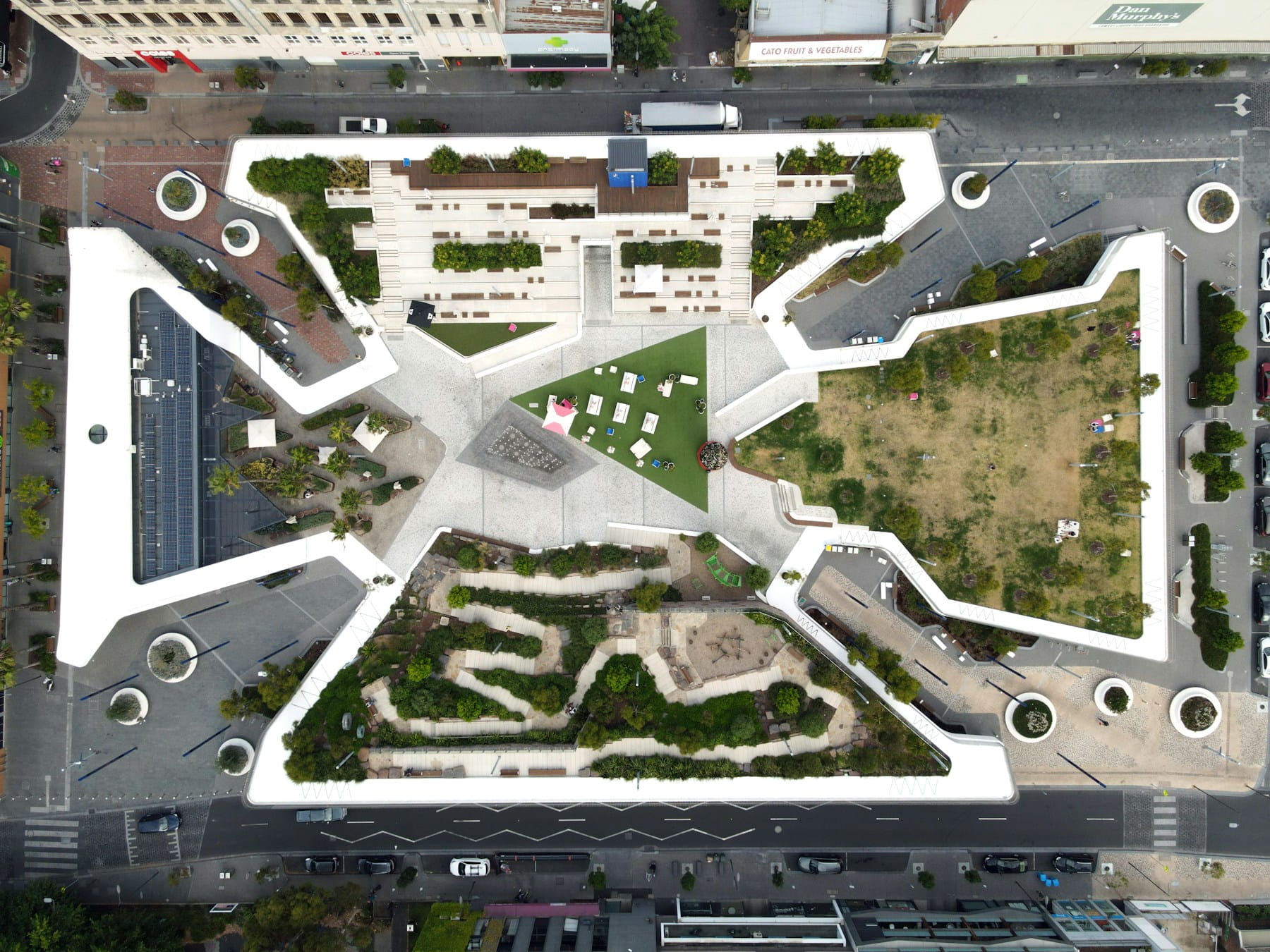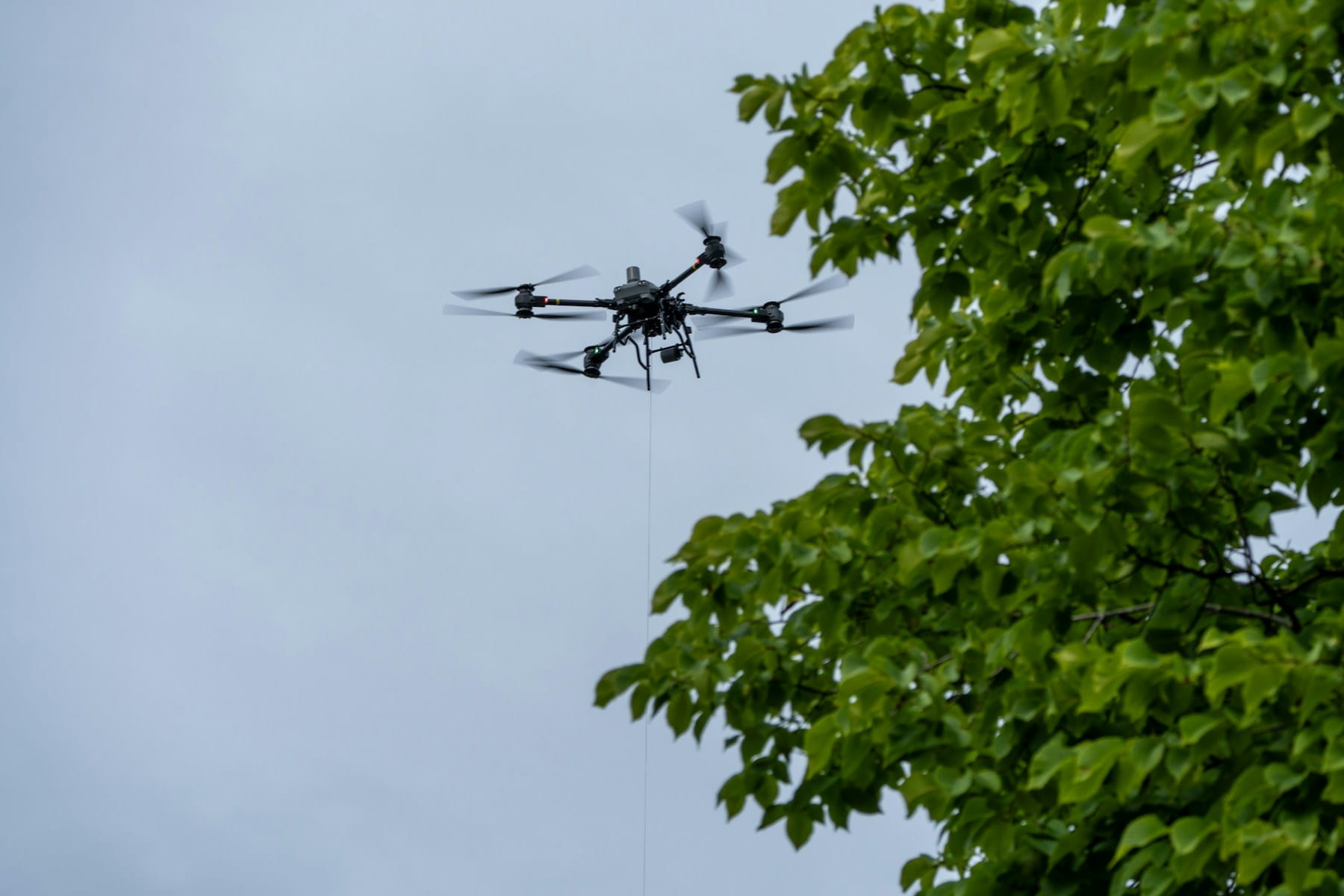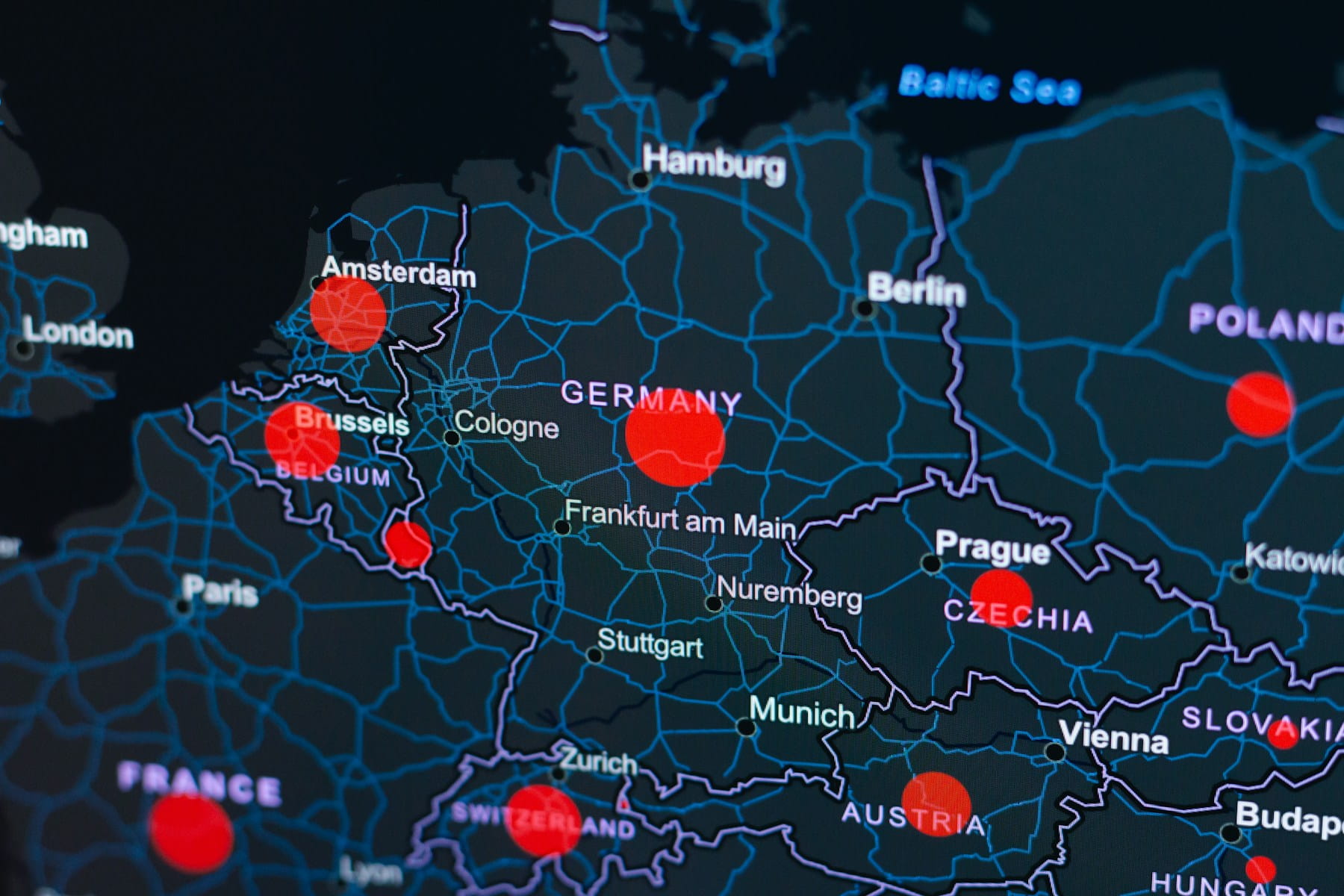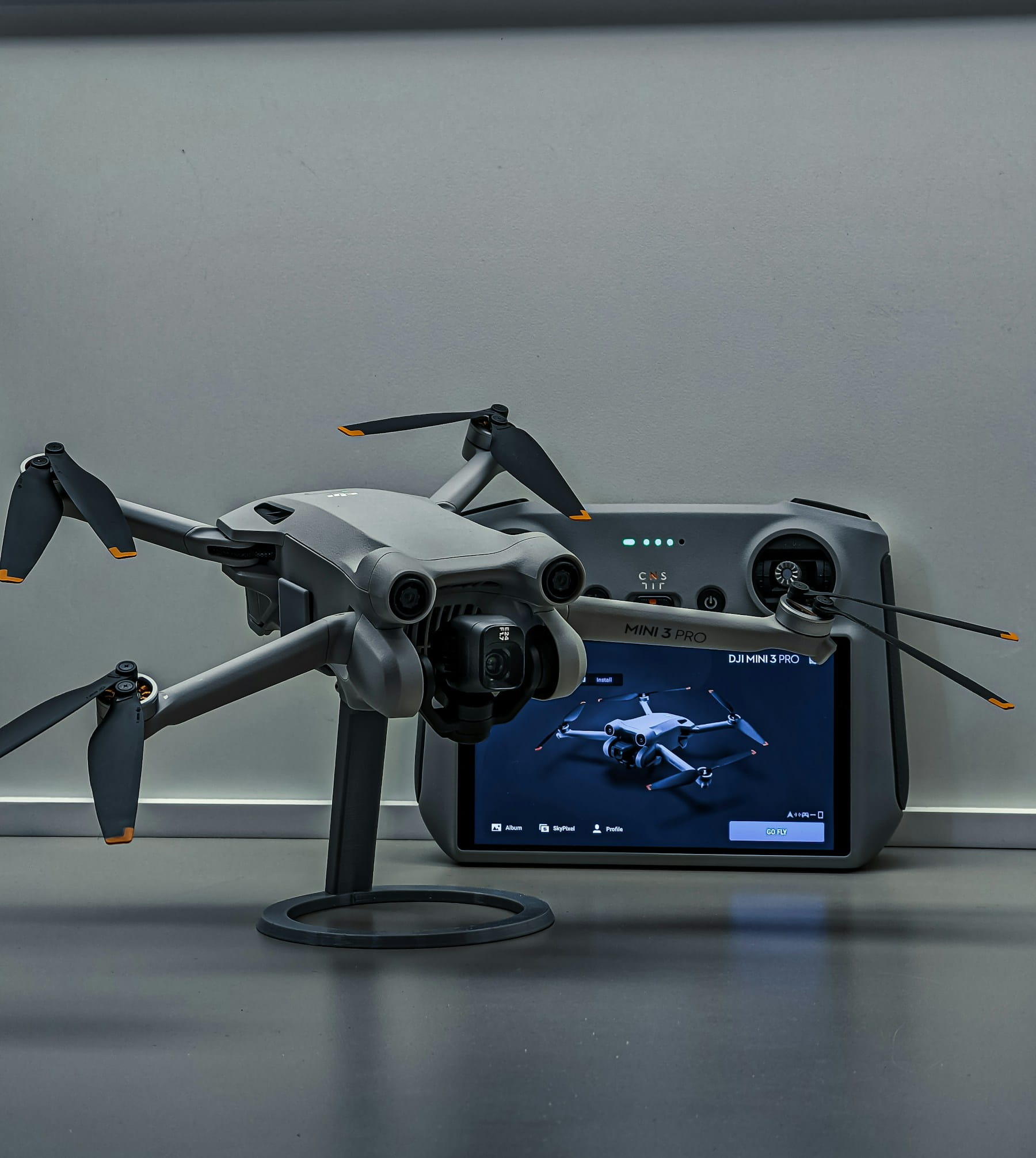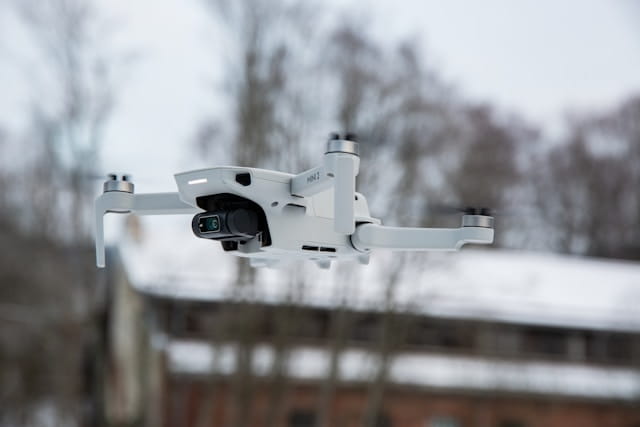Unmanned traffic management systems enable safe, efficient drone operations by coordinating airspace, providing real-time traffic data, conflict resolution, and regulatory compliance, supporting the growth of commercial drone applications worldwide.
Imagine this scenario: A delivery drone navigates toward a downtown office building while emergency response drones conduct search operations nearby. Simultaneously, inspection drones survey power lines, agricultural drones spray crops in adjacent areas, and news drones cover a developing story. All operate in the same airspace, at similar altitudes, with potential flight paths that could intersect.
This isn't science fiction – it's the current reality of commercial drone operations. With over 800,000 registered drones in the United States alone and numbers climbing rapidly, the traditional aviation principle of "see and avoid" has become obsolete. Remote pilots can't maintain visual contact with dozens of other aircraft operating beyond their line of sight.
The solution? Unmanned Traffic Management (UTM) systems that coordinate drone operations with the precision of air traffic control, but designed specifically for the unique challenges of unmanned aircraft. These systems don't just prevent collisions – they enable the coordinated, large-scale drone operations that define the future of commercial aviation.
Unmanned traffic management (UTM) represents a fundamental shift in how we approach aviation safety. It's not just about preventing collisions - though that's certainly a priority. UTM systems coordinate drone operations, manage access to airspace, provide real-time traffic information, and enable autonomous conflict resolution. The technology makes it possible for multiple operators to share the same airspace safely while maintaining the flexibility that makes drones so valuable for commercial applications.
The concept might sound futuristic, but UTM systems are already being tested and deployed around the world. The technology is moving from research laboratories to operational environments, driven by the rapid growth of commercial drone applications and the need for scalable safety solutions.
Table of contents
- What unmanned traffic management actually does
- Core components of UTM systems
- How UTM differs from traditional air traffic control
- Technology behind UTM operations
- Regulatory framework and standards
- Real-world UTM implementations
- Benefits for commercial drone operations
- Challenges facing UTM deployment
- Future of unmanned traffic management
- Getting started with UTM compliance
What unmanned traffic management actually does
Unmanned traffic management serves as the digital infrastructure that enables safe, efficient drone operations in shared airspace. At its most basic level, UTM systems track drone locations, predict potential conflicts, and coordinate resolutions before problems occur.
The system operates on several levels simultaneously. It monitors planned flight operations, tracking which operators have reserved specific airspace volumes at particular times. It provides real-time situational awareness, showing operators where other aircraft are operating. And it offers conflict resolution services, suggesting alternative routes or timing when potential conflicts are detected.
UTM systems also interface with existing aviation infrastructure. They communicate with air traffic control systems to coordinate drone operations near airports and other controlled airspace. They integrate with weather services to provide real-time environmental conditions that might affect flight safety. They connect to NOTAM systems to alert operators about temporary flight restrictions or other hazards.
The technology goes beyond simple traffic management. Modern UTM systems provide fleet management capabilities, allowing operators to coordinate multiple aircraft from a single interface. They offer compliance monitoring, tracking whether operations meet regulatory requirements. They provide data analytics, helping operators optimize flight paths and improve operational efficiency.
But perhaps most importantly, UTM systems enable scalability. They make it possible for thousands of drones to operate safely in the same airspace without requiring human controllers to manually coordinate each flight. The system handles routine coordination automatically, escalating only exceptional situations to human operators.
Core components of UTM systems
UTM architecture consists of several interconnected components, each serving specific functions within the overall system. These components work together to provide comprehensive traffic management services for unmanned aircraft operations.
Unmanned System Service Providers (USSPs) serve as the primary interface between drone operators and the UTM system. USSPs provide flight planning services, airspace authorization, real-time traffic information, and conflict resolution support. Operators submit their planned flights to USSPs, which then coordinate with other system components to ensure safe operations.
Fleet Management Systems (FMS) handle the operational aspects of drone flights. These systems track aircraft positions, monitor flight status, and provide pilots with situational awareness information. FMS platforms integrate with UTM services to share flight data and receive traffic updates.
Supplemental Data Service Providers (SDSPs) supply critical information that affects flight operations. This includes weather data, temporary flight restrictions, obstacle information, and terrain data. SDSPs ensure that UTM systems have access to current, accurate information needed for safe flight planning and execution.
Public Safety Unmanned System Support (PSUSS) components provide specialized services for law enforcement, emergency response, and other public safety operations. These systems often receive priority access to airspace and may operate under different rules than commercial operators.
The UTM ecosystem also includes various data exchange protocols and standards that enable interoperability between different system components. These protocols ensure that information flows smoothly between USSPs, flight management systems, and other stakeholders.
Communication networks form the backbone of UTM operations. These networks must provide low-latency, high-reliability data transmission to support real-time operations. Many UTM systems use cellular networks for primary communications, with satellite backup for areas with limited cellular coverage.
Data processing and storage systems handle the massive amounts of information generated by UTM operations. These systems must process flight plans, track aircraft positions, analyze potential conflicts, and store operational data for compliance and analysis purposes.
How UTM differs from traditional air traffic control
Traditional air traffic control was designed around fundamental assumptions that don't apply to drone operations. Commercial aviation operates from fixed airports using established airways and standardized procedures. Aircraft are large, expensive, and operated by highly trained pilots following strict protocols. Air traffic controllers manage traffic through direct communication with pilots, issuing specific clearances and instructions.
Drone operations break most of these assumptions. Drones can take off and land almost anywhere. They operate at low altitudes where traditional radar coverage is limited. Flight paths are often unpredictable, changing based on mission requirements. The aircraft are small, relatively inexpensive, and may be operated by pilots with minimal aviation training.
UTM systems address these differences through automated processes and distributed decision-making. Instead of centralized controllers issuing clearances, UTM systems use algorithms to detect and resolve conflicts automatically. Rather than relying on pilot-controller communication, UTM systems exchange data between aircraft and ground systems using digital protocols.
The scale of operations also differs dramatically. A busy airport might handle several hundred aircraft movements per day. UTM systems must potentially coordinate thousands of drone flights in the same airspace simultaneously. This scale makes human controllers impractical and requires automated systems capable of processing large volumes of data quickly.
UTM systems also operate in three-dimensional space more flexibly than traditional air traffic control. While commercial aviation operates primarily along established airways at specific altitudes, drones can move freely through low-altitude airspace. UTM systems must track and coordinate movements in all three dimensions while accounting for obstacles, weather, and other environmental factors.
Risk management approaches differ as well. Traditional aviation safety is built around preventing any accident through redundant systems and conservative procedures. UTM systems must balance safety with operational flexibility, accepting that some low-consequence incidents may occur while preventing high-risk situations.
Technology behind UTM operations
Modern UTM systems rely on sophisticated technologies to track aircraft, process flight data, and coordinate operations. These technologies must operate reliably in real-time environments while handling large volumes of data from multiple sources.
Remote ID technology provides the foundation for UTM operations by enabling identification and tracking of unmanned aircraft. Remote ID systems broadcast aircraft identification, location, and operational status information that UTM systems use for traffic management. The technology operates similarly to aircraft transponders but is designed for smaller, less expensive aircraft.
Geofencing systems create virtual boundaries that define where drones can and cannot operate. UTM systems use geofencing to enforce airspace restrictions, prevent aircraft from entering prohibited areas, and provide automated conflict resolution. Advanced geofencing systems can create complex three-dimensional boundaries that change over time based on operational requirements.
Artificial intelligence and machine learning algorithms analyze flight patterns, predict potential conflicts, and optimize traffic flows. These systems learn from operational data to improve performance over time. Machine learning algorithms can identify unusual flight behavior, predict maintenance needs, and optimize route planning based on historical performance data.
Communication protocols enable data exchange between aircraft, ground systems, and UTM service providers. These protocols must provide reliable, low-latency communication while maintaining security and interoperability between different system vendors. Many UTM systems use cellular networks for primary communication, supplemented by satellite links for remote areas.
Cloud computing platforms provide the processing power and storage capacity needed for UTM operations. These platforms must scale dynamically to handle varying operational loads while maintaining high availability. Cloud-based systems also enable rapid deployment of UTM services without requiring extensive ground infrastructure.
Sensor fusion technology combines data from multiple sources to create comprehensive situational awareness. UTM systems integrate information from radar, ADS-B, Remote ID, weather sensors, and other sources to build accurate pictures of airspace activity. Sensor fusion algorithms must account for different data qualities and latencies while providing reliable tracking information.
Blockchain technology is being explored for some UTM applications, particularly for creating tamper-proof operational records and enabling secure data sharing between organizations. While still experimental, blockchain could provide solutions for trust and accountability in distributed UTM systems.
Regulatory framework and standards
The regulatory environment for unmanned traffic management continues to evolve as aviation authorities worldwide develop frameworks for integrating drones into national airspace systems. Different countries are taking varying approaches, but most share common goals of ensuring safety while enabling operational flexibility.
In the United States, the Federal Aviation Administration has developed a comprehensive UTM framework through its UTM Pilot Program and associated research initiatives. The FAA's approach emphasizes industry-led solutions with government oversight rather than direct government provision of UTM services. This approach allows for innovation while maintaining safety standards.
The European Union Aviation Safety Agency (EASA) has taken a similar approach through its U-space initiative. U-space defines a regulatory framework for UTM operations in European airspace, with implementation planned in phases. The system will start with basic services like electronic identification and geofencing, eventually expanding to include automated conflict resolution and integration with traditional air traffic control.
International standards organizations play a crucial role in UTM development. ASTM International has published several standards related to UTM operations, including specifications for Remote ID, geofencing, and traffic management protocols. These standards help ensure interoperability between different UTM systems and vendors.
The International Civil Aviation Organization (ICAO) is working to develop global standards for unmanned aircraft operations, including UTM systems. ICAO's standards will likely influence national regulations worldwide, providing a framework for international drone operations and cross-border UTM coordination.
Certification requirements for UTM systems vary by jurisdiction but generally focus on safety, security, and performance standards. Service providers must demonstrate that their systems can reliably track aircraft, detect conflicts, and provide appropriate responses. They must also show that their systems are secure against cyber threats and can maintain operations during various failure scenarios.
Privacy and data protection regulations also affect UTM operations. Systems that track aircraft locations and store operational data must comply with various privacy laws, including requirements for data minimization, consent, and security. These requirements can complicate UTM system design and operations, particularly for systems operating across multiple jurisdictions.
Real-world UTM implementations
UTM systems are moving from research projects to operational deployments around the world. These implementations provide valuable lessons about what works in practice and what challenges remain to be solved.
NASA's UTM Traffic Coordination System (TCL4) represents one of the most advanced UTM implementations. The system has been tested in various environments, from sparse rural areas to dense urban settings. NASA's research has demonstrated that UTM systems can successfully coordinate hundreds of simultaneous flights while maintaining safety standards.
Project Wing's OpenSky platform provides UTM services for commercial drone operations in several countries. The system handles flight authorization, airspace coordination, and real-time traffic management. Wing's implementation demonstrates how UTM systems can support commercial applications like package delivery while maintaining safety and regulatory compliance.
AirMap's UTM platform serves thousands of drone operators worldwide, providing airspace information, flight authorization, and traffic coordination services. The system integrates with various drone hardware and software platforms, demonstrating the importance of interoperability in UTM deployments.
European implementations of U-space services are beginning to appear in several countries. These systems focus on providing basic UTM services like electronic identification and geofencing, with plans to expand capabilities over time. The phased approach allows regulators and operators to gain experience with UTM technology while building toward more advanced capabilities.
Altitude Angel's GuardianUTM platform operates in the United Kingdom and other countries, providing comprehensive UTM services including automated conflict resolution and integration with traditional air traffic control systems. The platform demonstrates how UTM systems can work alongside existing aviation infrastructure.
Several countries are developing national UTM systems as part of their aviation infrastructure. These implementations often focus on supporting specific applications like emergency response, infrastructure inspection, or cargo delivery. National systems can provide standardized services while ensuring compatibility with local regulations and operational requirements.
Real-world deployments have revealed both the potential and the limitations of current UTM technology. Systems work well for coordinating planned operations in controlled environments but struggle with unplanned or emergency situations. Integration with existing aviation systems remains challenging, particularly in complex airspace near major airports.
Benefits for commercial drone operations
UTM systems provide significant advantages for commercial drone operators, from small businesses running single aircraft to large enterprises managing extensive fleets. These benefits extend beyond basic safety to include operational efficiency, regulatory compliance, and business scalability.
Simplified flight authorization represents one of the most immediate benefits. UTM systems can automate much of the airspace authorization process, reducing the time and effort required to obtain flight permissions. Instead of manually checking multiple databases and submitting paper applications, operators can receive near-instantaneous authorization for routine flights.
Improved situational awareness helps operators make better decisions about flight planning and execution. UTM systems provide real-time information about other aircraft in the area, weather conditions, temporary flight restrictions, and other factors that might affect operations. This information helps operators avoid conflicts and optimize flight paths.
Enhanced safety margins result from better coordination and conflict resolution. UTM systems can detect potential conflicts much earlier than human operators and provide automated solutions. This proactive approach to safety can prevent accidents and reduce the risk of airspace violations.
Operational efficiency gains come from optimized flight planning and reduced delays. UTM systems can suggest optimal routes based on current conditions, coordinate multiple aircraft to minimize conflicts, and provide real-time updates that allow operators to adapt to changing conditions. These capabilities can significantly reduce operational costs and improve service reliability.
Fleet management capabilities enable operators to coordinate multiple aircraft from a single interface. UTM systems can track aircraft locations, monitor flight status, and coordinate operations across large geographic areas. This capability is particularly valuable for operators running delivery services, inspection programs, or other applications requiring multiple simultaneous flights.
Regulatory compliance support helps operators meet various legal requirements without extensive manual processes. UTM systems can automatically generate required documentation, monitor compliance with flight restrictions, and maintain records needed for regulatory reporting. This automation reduces the administrative burden on operators while improving compliance rates.
Scalability for growth allows businesses to expand operations without proportional increases in management overhead. UTM systems can coordinate hundreds or thousands of flights with the same effort required for managing a few aircraft manually. This scalability is crucial for businesses planning significant expansion of their drone operations.
Integration with existing systems enables operators to incorporate UTM capabilities into their current workflows. Many UTM systems provide APIs and other integration tools that allow connection with enterprise software, customer management systems, and other business applications.
Challenges facing UTM deployment
Despite significant progress, UTM systems face several challenges that must be addressed before widespread deployment becomes practical. These challenges span technical, regulatory, economic, and operational domains.
Technical complexity represents the most fundamental challenge. UTM systems must integrate multiple technologies while maintaining high reliability and performance standards. The systems must handle diverse aircraft types, varying communication capabilities, and different operational requirements while providing seamless service to all users.
Interoperability between different UTM systems remains a significant hurdle. Multiple vendors are developing UTM solutions, but ensuring that these systems can work together effectively requires extensive standardization and testing. Operators may need to work with multiple UTM service providers, making interoperability crucial for practical operations.
Communication infrastructure limitations affect UTM performance in many areas. UTM systems require reliable, low-latency communication networks to provide real-time services. Rural areas, remote locations, and some urban environments may lack adequate communication infrastructure to support full UTM capabilities.
Integration with existing aviation systems presents ongoing challenges. UTM systems must coordinate with traditional air traffic control, military airspace management, and other existing aviation infrastructure. These legacy systems were not designed to accommodate UTM operations, making integration complex and expensive.
Cybersecurity concerns affect all aspects of UTM operations. Systems that control aircraft movements and manage critical safety information present attractive targets for malicious actors. UTM systems must implement robust security measures while maintaining operational performance and user accessibility.
Economic sustainability questions remain unanswered for many UTM implementations. Developing and operating UTM systems requires significant investment, but sustainable business models are still emerging. The cost of UTM services must be reasonable for drone operators while providing adequate return for service providers.
Regulatory uncertainty continues to affect UTM development in many jurisdictions. While frameworks are emerging, many details remain undefined. This uncertainty makes it difficult for companies to make long-term investments in UTM technology and operations.
Privacy and data protection requirements complicate UTM system design and operations. Systems that track aircraft movements and store operational data must comply with various privacy laws, which can conflict with safety and operational requirements.
Public acceptance may become a factor as UTM systems enable more extensive drone operations. Communities may resist increased drone activity, even when it's safely managed through UTM systems. Public education and engagement will be crucial for widespread UTM acceptance.
Future of unmanned traffic management
UTM technology continues to evolve rapidly, driven by advances in artificial intelligence, communication technology, and aviation systems. Several trends are likely to shape the future development of unmanned traffic management systems.
Artificial intelligence integration will become more sophisticated, enabling UTM systems to handle increasingly complex scenarios automatically. AI systems will learn from operational experience to improve performance, predict problems before they occur, and optimize traffic flows in real-time. Machine learning algorithms will enable UTM systems to adapt to local conditions and operational patterns.
Advanced automation will reduce the need for human intervention in routine UTM operations. Future systems will handle most traffic management tasks automatically, escalating only exceptional situations to human operators. This automation will enable UTM systems to scale to much larger numbers of aircraft while maintaining safety standards.
Integration with urban air mobility will expand UTM capabilities to support passenger-carrying aircraft operations in urban environments. These operations will require more sophisticated traffic management capabilities, including integration with ground transportation systems and emergency response services.
5G and beyond communication networks will provide the low-latency, high-bandwidth connections needed for advanced UTM operations. These networks will enable real-time coordination of high-density operations and support new applications like swarm coordination and autonomous collision avoidance.
Blockchain technology may provide solutions for trust and accountability in distributed UTM systems. Blockchain could enable secure data sharing between organizations, create tamper-proof operational records, and support new business models for UTM services.
International coordination will become increasingly important as drone operations cross national boundaries. Future UTM systems will need to coordinate seamlessly across different countries and regulatory jurisdictions. International standards and protocols will be crucial for enabling global drone operations.
Advanced sensor technologies will improve aircraft detection and tracking capabilities. New radar systems, optical sensors, and acoustic detection systems will provide better coverage of low-altitude airspace where drones operate.
Quantum computing applications may eventually enable UTM systems to solve complex optimization problems that are currently intractable. Quantum algorithms could optimize traffic flows across large geographic areas while accounting for multiple constraints and objectives simultaneously.
Environmental integration will become more sophisticated, with UTM systems accounting for wildlife migration patterns, noise impacts, and other environmental factors. These capabilities will help minimize the environmental impact of drone operations while maintaining operational efficiency.
The convergence of these technologies will create UTM systems capable of supporting massive numbers of autonomous aircraft operations while maintaining safety standards and operational efficiency. These systems will enable new applications and business models that are currently impractical with existing technology.
Getting started with UTM compliance
Commercial drone operators planning to integrate UTM capabilities into their operations should take a systematic approach to implementation. The process involves understanding regulatory requirements, selecting appropriate service providers, and integrating UTM services with existing operational procedures.
Regulatory assessment should be the first step for any operator considering UTM integration. Different jurisdictions have varying requirements for UTM participation, and these requirements continue to evolve. Operators should work with regulatory experts or legal counsel to understand current requirements and planned changes that might affect their operations.
Service provider evaluation requires careful consideration of various factors beyond basic functionality. Operators should evaluate providers based on coverage areas, service reliability, integration capabilities, customer support, and pricing models. The provider's regulatory compliance and certification status should also be verified.
Pilot program implementation allows operators to gain experience with UTM technology while minimizing risk. Starting with a limited number of aircraft and operations allows operators to identify issues and optimize procedures before full-scale deployment. Pilot programs should include training for operators and maintenance staff.
System integration planning should address how UTM services will connect with existing operational systems. This includes flight planning software, fleet management systems, customer management platforms, and financial systems. Integration requirements should be defined early in the process to avoid costly modifications later.
Staff training programs must cover both technical and operational aspects of UTM systems. Pilots need training on new procedures and interfaces. Maintenance staff need training on UTM-related equipment. Management staff need training on regulatory compliance and operational optimization using UTM data.
Operational procedure development should define how UTM services will be used in day-to-day operations. This includes flight planning procedures, emergency response protocols, data management practices, and customer communication processes. Procedures should be documented and regularly updated based on operational experience.
Performance monitoring systems should be established to track the effectiveness of UTM integration. Key metrics might include flight authorization times, operational efficiency measures, safety incident rates, and regulatory compliance levels. Regular performance reviews should identify opportunities for improvement.
Compliance documentation must be maintained to demonstrate regulatory compliance and support operational analysis. UTM systems typically generate extensive data about flight operations, but operators must ensure that this data is properly stored, secured, and available for regulatory audits.
Implementation Considerations
Unmanned traffic management integration requires systematic planning that addresses technical capabilities, regulatory requirements, and operational procedures. Organizations implementing UTM systems benefit from comprehensive platforms that combine airspace coordination with established fleet management and compliance tracking systems.
Successful UTM integration often begins with pilot programs that demonstrate capabilities while building operational experience. This progressive approach allows organizations to optimize procedures and validate benefits before full-scale deployment across their operations.
In Summary
Unmanned Traffic Management systems represent the critical infrastructure enabling safe, scalable drone operations in increasingly crowded airspace. These systems transform aviation coordination from reactive collision avoidance to proactive traffic optimization, supporting the commercial drone industry's continued growth.
The technology has evolved from experimental research to operational deployment, with systems already managing thousands of flights safely and efficiently. Organizations that understand and integrate UTM capabilities position themselves for success in an aviation environment where coordinated operations become the standard rather than the exception.
Success in modern commercial drone operations increasingly depends on leveraging UTM systems that provide situational awareness, automate coordination, and ensure regulatory compliance while maintaining operational flexibility.
Ready to Optimize Your Airspace Coordination?
Join commercial operators who have enhanced their operational capabilities through systematic UTM integration and comprehensive fleet management. Whether you're coordinating single aircraft or managing complex multi-drone operations, integrated operational platforms provide the foundation for safe, efficient, and compliant airspace utilization.
Start your free trial today — no credit card required. Or book a demo to see how DroneBundle integrates UTM coordination with compliance management, fleet operations, and mission planning in a platform designed specifically for professional commercial operations.
